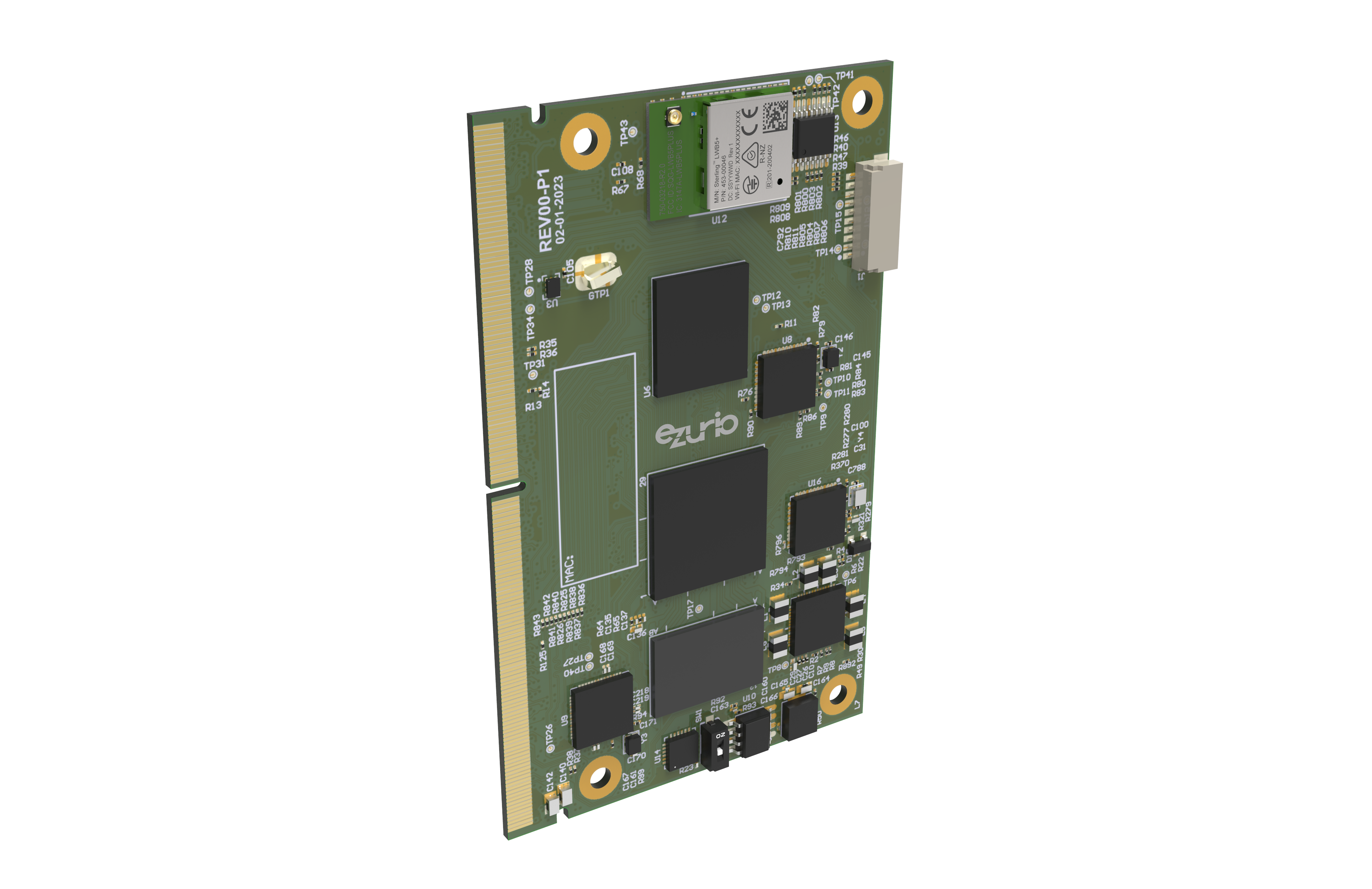
What Is The SMARC Standard and What It Can Do For Your Design
In this first of a series of blog posts, we discuss various aspects of the SMARC standard, a critical component of our SOM portfolio, and what it means for our customers.
Published on August 22, 2023

The “Why” Behind SMARC
Oftentimes in hardware and software development, the
technologies that endure and grow are those which become standardized and
agreed-upon by developers. The ubiquity of wireless technologies like Wi-Fi and
Bluetooth can be attributed in many ways to the establishment and codification
of a standard by their respective interest groups, creating an interoperability
and universality that functions like a rising tide that raises all boats.
Hardware standards share a similar advantage and are
commonplace in computer peripherals. Standards like the PCI Express connector, the
M.2 connector, standardization of sizes of common components and shared pin
connector specifications are necessary to support a wide market of hardware
options to the benefit of customers.
The world of embedded computing is no different, and within
embedded computing many standards exist for many of the same reasons. As single
board computers become a more common and critical piece of a growing ecosystem
of mobile IoT applications, new standards are necessary to create a coherent
path forward for developers and OEMs.
The Standardization Group for Embedded Technologies (SGET) is
an international not-for-profit trade group dedicated to collaboration and
defining industry standards to advance technology around the world. Their
defined standards include Qseven, Embedded NUC, UIC, and OSM.
What is a SMARC?
SGET set out to create a defined computer module standard to
address the needs of embedded computing: addressing low power consumption, low
cost, and high performance in a few form factors (82 x 50 mm and 82 x 80 mm).
In addition, the standard includes a defined pinout and electrical
specification, serving as a guide for manufacturers to create consistent
hardware offerings with the possibility of interoperability with other devices.
This standard, first published in 2012, is given the name “SMARC,” which stands
for Smart Mobility ARChitecture, and it’s based on the global ULP-COM standard,
which was also developed to address low power computing needs.
An Overview of SMARC Modules
A typical SMARC module is built on the ARM architecture,
although other SoC types are possible. The standard covers hardware dimensions,
connectors, and pin assignments. Since the standard seeks to address low power
and high performance, a typical SMARC module only requires a few watts of
power. The two physical sizes also address slightly different purposes for an
embedded computer: the 82 x 50 mm form factor is designed to be as compact as
possible, while the 82 x 80 mm design allows extra space for more
high-performance components and the cooling systems required.
The connector specified is a 314 pin edge connector,
designed to be connected to a low-profile connector on a main board. The pins
are dedicated to functions such as power supply, ground, interfaces like
display, camera, SPI, audio, USB, SATA, PCIe, and more. The breakdown of the
pin assignments has filled in with continuing updated versions of the standard
(now up to version 2.1.1)
Future Trends in SMARC Modules
For OEMs, utilizing a SMARC module in a new hardware design
has many benefits beyond just the usefulness of the SMARC standard itself. For
product developers, utilizing a standardized form factor module grants a higher
degree of confidence that a product design can be updated and refreshed with a
form-fitting replacement. For OEMs whose product life cycles can be 10, 15, or
20 years long, this is a critical consideration that can guarantee a smooth
transition to new wireless standards and functionality that isn’t available
today.
The growth of the SMARC standard, for this reason, truly is
the tide that raises all boats. As manufacturers continue to adopt and provide
more offerings in the SMARC form factor, OEMs can have greater assurance that
their product’s life cycles are covered by an evolving ecosystem of module
offerings. Ezurio’s SMARC modules (the Nitrogen8M
Plus SMARC, Nitrogen8M Mini SMARC, Nitrogen93
SMARC, Tungsten510 SMARC, Tungsten700
SMARC) are part of a lengthy roadmap that intends to offer OEMs drop-in
replacement options, multiple customizable wireless options, and more.
Ezurio’s mission is simplifying connectivity for
our customers, and SMARC SOM modules provide a trusted path forward for long
design cycles such as those found in medical devices. As new use cases and
wireless standards emerge, Ezurio will provide new and upgraded
SMARC SOM products that give OEMs the easiest way to keep their legacy products
up to date and on the cutting edge.
In the next post of this series, we’ll cover how Ezurio implements the SMARC standard in our system-on-modules, and what that means for our customers.
 Laird Connectivity is now Ezurio
Laird Connectivity is now Ezurio